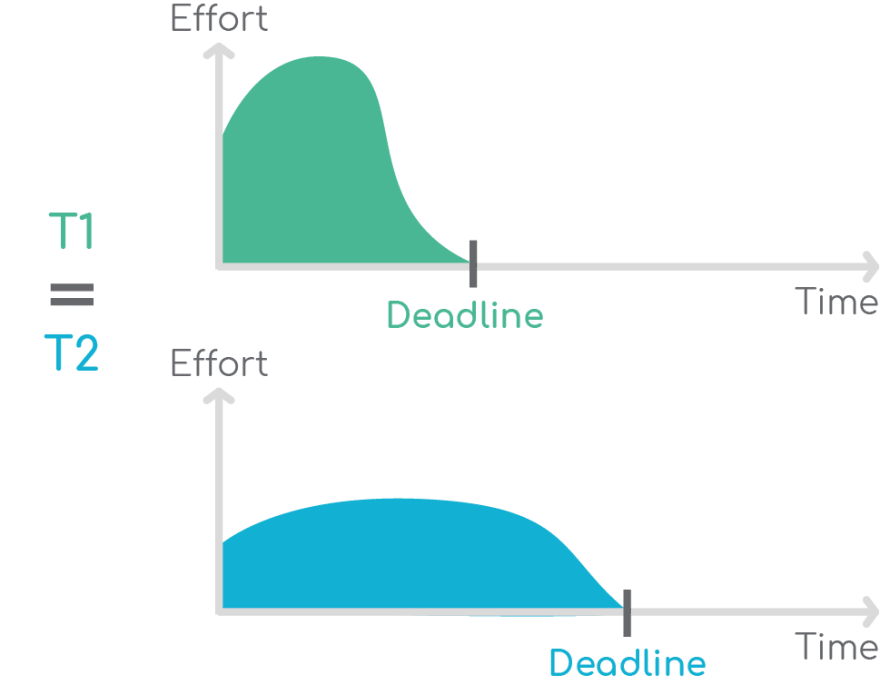If humans gave themselves 1 week to complete a task of 1 day then it will take 1 week to get it completed. This is where Parkinson’s Law comes into picture.
Parkinson’s Law origin
A British naval historian and scholar named Cyril Northcote Parkinson wrote an essay for The Economist in 1955. The first statement of the essay became the Parkinson's Law, which was named after him by accident. In 1958, it was republished in the book Parkinson's Law: The Pursuit of Progress, which was translated into several languages and became well-known in the fields of public administration and management.
Parkinson’s Law:
Parkinson’s Law is expressed as “work extends so as to fill the time allotted for completion”.
Parkinson’s Law of Procrastination:
Scientists have demonstrated that when people are given more time than they need, they spend it by procrastinating, perusing the internet, skimming through social media, and so on. This is something that everyone has gone through at some point in their lives.
If the work has to be done tomorrow it will be completed by tomorrow.
If the work has to be done in 3 months, it will be completed in 3 months.
If the work has to be done in 1 year, it will be done completed in 1year.
Parkinson’s Law graph:
Below is the Parkinson’s Law graph for further understanding:
This graph illustrates the time taken to complete the work is directly proportional to the time allotted to complete it. In the x-axis, it’s required for completion of the work. In y-axis it is the effort we put in completing it. As a result, the higher the effort, the better the result.
Examples of Parkinson’s law:
When students have 5 day for preparing for an exam, the first 4 days they would spent in doing very inadequate preparation the actual preparation happens only on the last day. This is popularly known as Student Syndrome.
The majority of IT organizations have begun experimenting with a four-day work week. Furthermore, their staff will labor for 8 hours every day, four days a week. Taking more time off, according to their CEO, means being more productive.
Parkinson's Law of time management:
It's best not to have an indeterminate deadline for any activity or project, no matter how minor. Undefined goals result from an undefined deadline. Furthermore, this indicates that we will never know when the goal will be finished.
Time management is a mental process. We set our pace based on the amount of effort we put in.
Parkinson's law of triviality (bike shedding):
It's an observation concerning people's tendency to spend a lot of time on unimportant tasks rather than on important ones.
The word comes from Parkinson's observation of a committee formed to approve nuclear power station blueprints. As C. Northcote Parkinson pointed out, the committee spent an inordinate amount of time on relatively minor matters – such as the materials for the bicycle storage shed – limiting the amount of time available to focus on the nuclear plant's design.
The law of triviality, like Parkinson's law, has ramifications in a variety of business disciplines, including time management, resource allocation, project planning, and Project management.
Parkinson's law in project management:
Along with student syndrome, the behavior related with Parkinson’s law has a considerable influence on project performance. It is one of the primary causes of project inefficiency and delays.
It's critical for project managers to understand Parkinson's law's effects and how they might mitigate them through scheduling.
According to Parkinson’s law in project management, a task is either completed on time or delayed. A task is not completed and delivered before the deadlines. To achieve the most efficient use of resources and time, the time allocated for each task in a project needs to correspond with the time of completion using maximum effect. If the allocated time is too less then work is delayed and if it is too long, unnecessary time and resources are wasted.
How to use Parkinson's law to save time?
• Reduce the time allotted to each tasks.
• Find the perfect proportion of time to finish.
• Always work goal-oriented.
• Be ambitious with the deadlines.
• Don’t be too much of a perfectionist if it takes a lot more time.
The Pareto principle & the Parkinson’s law:
It's crucial to know what to focus on and when to work in order to get the most of your resources and time.
The Pareto principle is a basic notion that states that 80% of positive results are the product of 20% of highly effective activities, while 80% of the difficulties we face are the result of 20% of bad judgments.
The Pareto principle or 80/20 rule explains us what to work on. It also explains what is important and is worth my time to work on?
The Parkinson’s Law guides when to work on? It further states how much time should I spend working on these important tasks?
Parkinson’s Law of Data:
According to Parkinson, data expands to fill the space available for storage.
Parkinson’s Law relevant to the design of the physical architecture layer:
Parkinson's law argues that, regardless of the users' actual demands, the system's capacity will always be filled by fictional needs.
Conclusion:-
As per Parkinson, work should have deadlines. Each and every task should be result oriented in order to increase its productivity and efforts.




Top comments (0)